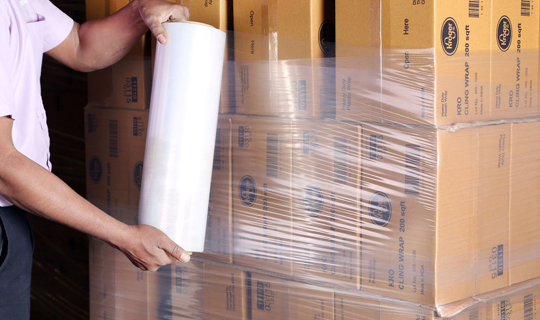Why wrapping a pallet correctly is critical for safety
Unstable loads are a recipe for disaster. Picture a large pile of poorly wrapped pallets stacked atop one another. or improperly wrapped pallets, which cause them to shift and cause the truck they are transported in to become unstable. Most likely, you wouldn’t want to be in either of these circumstances even close!
The most crucial component of load stability and a crucial component of pallet transfer is safety. Pallets must always be kept upright, both when being transported and stored. There is no other method to prevent harm. Pallet stability is therefore the first step toward safety.
How to achieve pallet stability, in two ways:
- By creating optimally wrapped pallets, with the right film on an optimally tuned machine.
- By stacking the pallets properly and securing them inside the truck.
The correct stretch film will strengthen your safety

The purpose of stretch film is safety. Since you can’t get the necessary pallet stability without stretch.
Sufficient stretch is available in the proper stretch film to accommodate both product and pallet wrapping. That being said, they are not universally applicable. Every kind of stretch film has characteristics that make it useful for different purposes. Different specifications apply to light cargo than to heavyweight loads.
Subpar film is ineffective, violates safety regulations, and has the opposite impact of what is intended in terms of sustainability. Stretch wrap must have sufficient strength to withstand breaking both during wrapping and shipping. To achieve the best pallet stability, be one step ahead of the game and choose the appropriate film.

